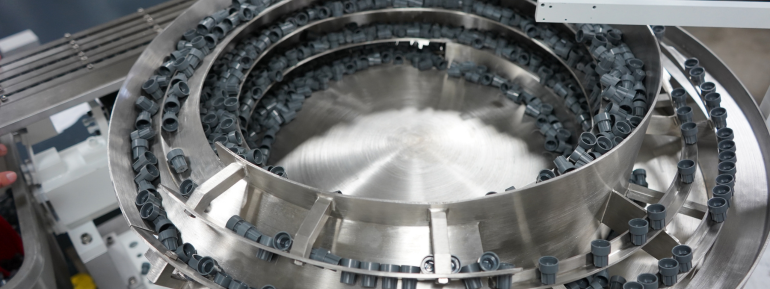Choosing the parts feeder system manufacturer that’s going to create the best solution for your business requires research. Some companies offer solutions with lower costs up front, but you end up paying more over time with repair, system down time, and lost productivity and efficiency.

Evaluate TCO of a Parts Feeder System to Maximize ROI
Evaluating Total Cost of Ownership (TCO) is critical when selecting a feeder system vendor. You must consider the following:
- Total cost of the machine (feeder system and related components)
- Increases in production that result from the project
- Efficiency – there’s a big difference between 50 and 75 parts per minute
- Costs associated with changeover time
- Lost production caused by change-out time
- Cost of excess scrap material
- Anticipated system lifespan
- Support during the start-up process
- Warranty cost
- Cost to train and maintain system efficiency
- Preventative maintenance costs
- Machine size – some companies require double the amount of space for a system we can fit in 50 percent of the allotted space
- Utility operating costs, including electricity, air conditioning and heating, water, and so on
- Equipment and software flexibility – Hoosier Feeder Company can use different suppliers to meet your needs
- Component use and availability - can you easily get components when needed?
- Likelihood of breaking down
Down-Time and Lost Production can be Largest Costs
Some companies focus only on the upfront costs of a project, when the long-term factors have a much greater impact on ROI. One distribution company, for example, opted to purchase a feeder system for $3,000 less than a Hoosier Feeder system, to orient a pill bottle. Changing over a new part with their system ended up costing the company more than 8 hours of productivity with each part change out. The proposed Hoosier Feeder system would have taken under 10 minutes to change out a part. Measured against typical daily results, the company ended up losing more than $6,000 in lost production every time they needed to switch products. It is important that businesses realize that down time and lost production can become some of the largest TCO expenses.
Let's Talk
Have you recently evaluated the TCO of your company’s current feeder systems (vibratory feeders or centrifugal feeders)?
What efficiencies do you think could be realized by installing a new system?
How can a better feeder system improve your overall assembly ROI?
To learn more about how Hoosier Feeder Company can help, contact us today.
Related Topics: Vibratory Feeders, Centrifugal Feeders